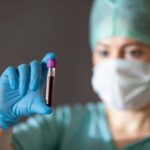Process That Led To The Discovery of Proton and Neutron
According to Dalton’s Atomic theory, matter is formed from tiny particles referred to as atoms. It can’t be created or destroyed, and the physical properties of the same element and their masses are identical. An atom was considered to be a small indivisible part. A large number of researches and discoveries have been done within the nineteenth and twentieth century.
The Scientist attempted studies to understand the fundamental structure of atoms and ultimately. Plum pudding model, gold foil experiment, and Bohr’s atomic theory are successful studies that helped discover the subatomic particles. The results inferred that an atom is formed of subatomic particles or fundamental particles like neutrons, protons, and electrons. With this article, comprehensive knowledge of the discovery of Neutron and Proton was done.
Learning the process of the discovery of proton and neutron can be an exciting experience for chemistry enthusiasts.
Proton
Proton could be a stable fundamental particle that contains an electric charge. They reside within the nucleus of the atoms. A proton’s mass is 1.67262 × 10−27 kg, 1,836 times the associated mass of electrons. It carries a positive unit charge. Generally, the number of protons and electrons in an atom is equal because this atom is electrically neutral. Proton is represented by p.
Proton Discovery
The discovery of protons was proven by Ernest Rutherford, who gave his theory related to the nucleus of the atom. He determined that the nucleus of the hydrogen atom is present in the nuclei of all other atoms.
Rutherford Gold foil Experiment
The father of Proton is Ernest Rutherford. He was a physicist from New Zealand. In his gold-foil experiment, Rutherford and his colleagues started their experiment with the piece of gold foil; they shot tiny things over it, referring to them as alpha particles. These particles were positive and smaller than the size of an atom. The aim was to observe what happens to the alpha particles once they hit the gold foil. For this, they placed a sample of radium (a radioactive metal) inside a lead box with a small pinhole in it. After this, they bombarded alpha particles continuously.

Observation
- Most of the alpha particles traversed straight through the foil.
- A minimal quantity of alpha particles rebounded from the foil.
- Few alpha particles get deflected to some angles from their path.
Inference
- Most of the area in an atom is empty as a result. Thus, most of the alpha particles passed straight through the foil.
- The concentration of electric charge within the atom is positive, as positive charges at the centre repel the alpha particles.
- The small angled deflections mark the presence of negatively charged particles. The electrons and nucleus, a concentrated mass of positively charged particles, are held together very firmly due to the strong electrostatic force of attraction of electrons.
Neutron
A neutron could be a fundamental particle present in the nucleus of the atoms. In contrast to protons or electrons, there’s no charge on that. Its mass is fractionally bigger than that of a proton. Neutrons are represented by n.
Discovery of Neutron
In 1932 James Chadwick was the Scientist who proved the existence of an uncharged particle neutron in the nucleus of the atom. He received the nobel prize for his discovery of neutrons. The studies conducted by him stated that the central core of atoms contains uncharged particles called neutrons. He took atoms of Boron, Lithium, and Beryllium and then shot these atoms with alpha particles.
The team released alpha particles from the decayed radioactive polonium on the beryllium sheet. The selected paraffin sheets are highly positively charged H atoms. James Chadwick and his co-workers use paraffin and put the paraffin sample in front of the rays that are shot out of these atoms. They observed that when the paraffin gets hit by the rays, the protons get shot out very quickly, which means whatever is coming from the atoms of Boron, Beryllium, and lithium has to be the same mass as the protons that are getting shot out from paraffin.
They obtained uncharged radiation that penetrated and interacted to the surface of paraffin. The bombardment of the rays resulted in the release of numerous hydrogen atoms from the sheet. This displacement indicated the ejection of the neutral particles of the same mass of the protons. This is how a neutron was discovered. It’s a neutron that is getting shot out from the atoms of these elements and smashed up with the protons that are shot out with paraffin.
| Protons | Neutrons |
| They are positively charged subatomic particles. | Neutrons are neutral subatomic particles which means they don’t have any charge in them. |
| They are present inside the nucleus. | They are also present inside the nucleus. |
| They have a mass of 1.67×10−27kg1.67×10−27kg. | They have a mass of 1.67×10−27kg1.67×10−27kg. |
| Protons are represented as “p.” | Neutrons are represented as “n.” |
| They do not decay spontaneously. Protons are very stable in nature | They are unstable and decay liberating beta particles. |
| Atomic number = the no. of protons in the atom. | Mass number = number of protons, number of neutrons. |
Conclusion
Atoms are the building blocks of the matter. Atoms, as described by the scientists, are tiny. The atoms are composed of subatomic particles, namely electrons, protons, and neutrons. The nucleus contains the protons and the neutrons, while the electrons revolve in the orbits in the atoms. The nucleus has the maximum mass of the atom and is dense. Neutrons are neutral, protons are positively charged, and electrons are negatively charged. The charge balances the number of protons and electrons. The electro attraction between the protons and electrons holds the atom together and the atoms combined to form elements.
Frequently Asked Questions (FAQs)
Q1. Explain the plum pudding model.
- J.J. Thomson described the structure of the atom with an analogy to the plum pudding. He stated that the atom is similar to the spherical pudding having electrons as the plums spread randomly throughout the pudding surface. He also aimed to observe the atom’s neutral nature despite the presence of negatively charged electrons in it. It was an excellent initiative for the discovery of subatomic particles.







